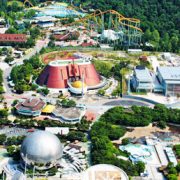Making virtual models requires real-world data
The team at UHEI developed a dynamic model of the human body. Together with the team at VUA we collected the movement and ground reaction forces of a human subject performing a series of everyday activities. We later used this data to build a multi-body dynamic model of the subject that included detailed models of several muscle groups. These are necessary so that the strength of the model varies with posture and the speed of movement just as it does in real humans.






